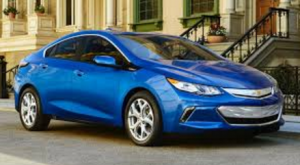 High performance luxury sports cars took center stage at this year’s New York Auto Show. New product launches included Audi’s convertible version of its R8 supercar, the R8 Spyder; the redesigned Lincoln Navigator concept luxury SUV; and the Mercedes-AMG C63/C63 S cabriolet with 503 horsepower and 516 ft-lbs. of torque in the C63 S. Fuel efficient and alternative technology vehicles wasn’t the star of the show, though it did have its presence; even though gas prices are down, automakers are continuing to move forward to diversify green car offerings on the market and to meet federal and state of California fuel economy and emissions standards. Hyundai’s Ioniq took the most attention among green cars being shown off, and the Toyota Mirai fuel cell car won an international award.
High performance luxury sports cars took center stage at this year’s New York Auto Show. New product launches included Audi’s convertible version of its R8 supercar, the R8 Spyder; the redesigned Lincoln Navigator concept luxury SUV; and the Mercedes-AMG C63/C63 S cabriolet with 503 horsepower and 516 ft-lbs. of torque in the C63 S. Fuel efficient and alternative technology vehicles wasn’t the star of the show, though it did have its presence; even though gas prices are down, automakers are continuing to move forward to diversify green car offerings on the market and to meet federal and state of California fuel economy and emissions standards. Hyundai’s Ioniq took the most attention among green cars being shown off, and the Toyota Mirai fuel cell car won an international award.
Hyundai announced that its newly unveiled Ioniq will roll out to dealers later this year in hybrid, plug-in hybrid, and battery electric vehicle options. Hyundai’s putting a lot of hope in the Ioniq to move its brand along with excellent gas mileage and attractive plug-in range; and as its first dedicated alternative technology model. Hyundai wants to be the second largest green car seller in the world by 2020, following Toyota, so there’s a lot of expectation on the Ioniq brand to perform. The hybrid version may be rated at 57 or 58 miles per gallon in combined city and highway mpg. The plug-in hybrid will get 25 miles of battery power before the gas engine kicks in with a total driving range of about 600 miles using its battery and gas engine. The battery electric car will go 110 miles per charge, farther than the Nissan Leaf.
Hyundai’s Genesis brand showed a hybrid-powered, cleanly styled concept luxury sedan. The stylish hybrid concept car is the latest offering from Hyundai’s newly launched Genesis luxury brand. It offered a glimpse of the upcoming Genesis G70 that has its sights set on the BMW 3-series; and it’s meant to set the stage for the future of the Genesis brand.
The 2017 Prius Prime plug-in hybrid was Toyota’s most visible showing in New York. It suggests that Toyota remains committed is to its Prius lineup of hybrids at a time when gas prices remain at unexpected lows. The introduction of the Prius Prime plug-in hybrid comes two years after Toyota ended production of its previous Prius plug-in hybrid car. The first Prius plug-in car went just 11 miles on a full charge and dropped in sales after an initial surge. Toyota estimates that the Prius Prime will get 120 or more miles per gallon equivalent, which would be the highest MPGe rating of any plug-in hybrid. It will offer a significant 26% improvement over its predecessor Prius Plug-in.
In the SUV segment, Toyota demonstrated a hybrid version of its Highlander, Honda Motor Co.’s Acura MDX will get a new “sport hybrid” option, and the Maserati Levante is available in hybrid form. As for supercars, the Koenigsegg Regera revealed in New York combines electric drive with a V-8 engine to generate more than 1,500 horsepower.
During a ceremony on Thursday at the show, The Toyota Mirai hydrogen fuel cell car was named 2016 World Green Car. The Mirai was one of eight global vehicles nominated for the annual award. Judges factored in tailpipe emissions, fuel consumption, and use of a major advanced power plant technology to increase the vehicle’s contribution to sustainability. While it’s only rolling out now in California, advocates of hydrogen fuel cell vehicles see the Mirai as a major stepping stone in moving the technology forward.

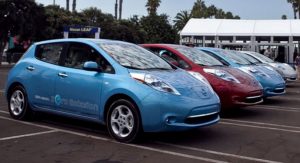 If you look at U.S. green car sales numbers, you’ll notice that the Nissan Leaf is down considerably – while others, including arch-competitor Chevrolet Volt – are up noticeably lately. The Leaf isn’t the only plug-in seeing declines in U.S sales. The BMW i3 has dropped way down this year, and Ford has announced that the Ford C-Max hybrid and plug-in hybrid will be vanishing in 2018.
If you look at U.S. green car sales numbers, you’ll notice that the Nissan Leaf is down considerably – while others, including arch-competitor Chevrolet Volt – are up noticeably lately. The Leaf isn’t the only plug-in seeing declines in U.S sales. The BMW i3 has dropped way down this year, and Ford has announced that the Ford C-Max hybrid and plug-in hybrid will be vanishing in 2018.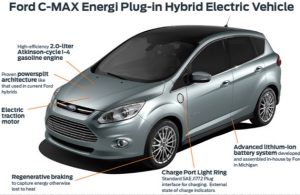 Ford changes gears on C-Max series: It was surprising to hear that Ford will be killing off the Ford C-Max Hybrid and C-Max Energi plug-in hybrid models in 2018. Sales numbers haven’t been strong enough for Ford to stay committed to the relatively new crossover hatchback models.
Ford changes gears on C-Max series: It was surprising to hear that Ford will be killing off the Ford C-Max Hybrid and C-Max Energi plug-in hybrid models in 2018. Sales numbers haven’t been strong enough for Ford to stay committed to the relatively new crossover hatchback models. 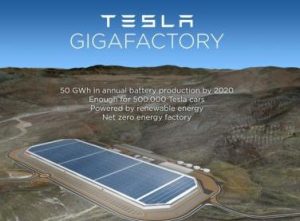 Nevada workers protest at Gigafactory: Hundreds of union construction workers walked off the job at
Nevada workers protest at Gigafactory: Hundreds of union construction workers walked off the job at 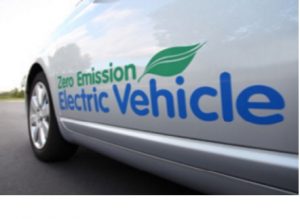 Gasoline prices may stay down for a while, but OEMs don’t seem to be backing away from producing zero, or near-zero, emissions vehicles. Industry forecasters tend to agree that green cars will make up a sizable percentage of global new vehicle sales in the fairly near future.
Gasoline prices may stay down for a while, but OEMs don’t seem to be backing away from producing zero, or near-zero, emissions vehicles. Industry forecasters tend to agree that green cars will make up a sizable percentage of global new vehicle sales in the fairly near future.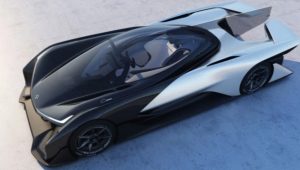 Will Faraday have a Nevada factory?: Luxury electric carmaker
Will Faraday have a Nevada factory?: Luxury electric carmaker 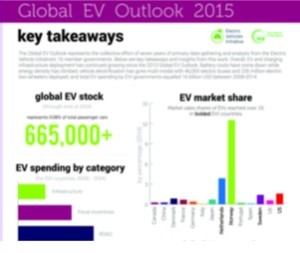 Digging into EV sales forecast: Manheim’s annual Used Car Market Report made a surprising forecast last week: By 2025, electric vehicles (EVs) are expected to make up 25% of global auto sales, and 30 million new EV units will be produced that year. How accurate could this be, with global EV sales reaching about 520,000 units last year, global new vehicle sales hitting around 89 million in 2015, and 2025 coming up in nine years? Manheim thinks that incentives will play a big part, including government programs such as federal tax incentives and state rebates (with California, Washington, and Colorado currently offering the most robust incentives). Population migration to cities will be another driver with cities becoming denser, which is likely to drive adoption of cleaner vehicles and carsharing, both of which will benefit EV sales. Curious about this forecast, I dug into the footnotes. For the 25% of global sales forecast, Manheim cited the
Digging into EV sales forecast: Manheim’s annual Used Car Market Report made a surprising forecast last week: By 2025, electric vehicles (EVs) are expected to make up 25% of global auto sales, and 30 million new EV units will be produced that year. How accurate could this be, with global EV sales reaching about 520,000 units last year, global new vehicle sales hitting around 89 million in 2015, and 2025 coming up in nine years? Manheim thinks that incentives will play a big part, including government programs such as federal tax incentives and state rebates (with California, Washington, and Colorado currently offering the most robust incentives). Population migration to cities will be another driver with cities becoming denser, which is likely to drive adoption of cleaner vehicles and carsharing, both of which will benefit EV sales. Curious about this forecast, I dug into the footnotes. For the 25% of global sales forecast, Manheim cited the 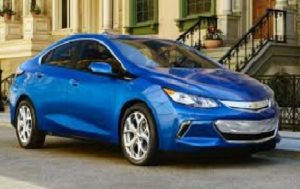 January EV sales: Plug-in electric vehicle sales saw the typical downturn pattern for the month of January. Winter Storm Jonas, which closed parts of the Eastern Seaboard for several days, has meant that less car shoppers have visited dealerships. With 2015 down slightly from 2014 in overall EV sales, January didn’t start this new year on a strong note. The
January EV sales: Plug-in electric vehicle sales saw the typical downturn pattern for the month of January. Winter Storm Jonas, which closed parts of the Eastern Seaboard for several days, has meant that less car shoppers have visited dealerships. With 2015 down slightly from 2014 in overall EV sales, January didn’t start this new year on a strong note. The  ACT Expo: The
ACT Expo: The 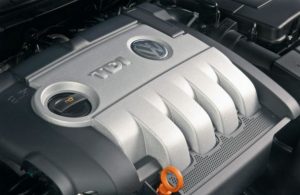 What’s next for VW: The first part of this new year will see details released on the Volkswagen recall by the U.S. Environmental Protection Agency and California Air Resources Board on a proposed fix for its diesel-engine cars. EPA and CARB will be making an announcement this month regarding solutions proposed by Volkswagen for about 482,000 cars equipped with EA 189 engines; some models will likely require hardware and software updates, while other may require only a software solution. The recall might be tied into the lawsuit the U.S. Justice Department filed in a civil complaint yesterday on behalf of the EPA (see news coverage above). Electric vehicle launches may be a channel for VW to tap into to restore its image as a responsible global corporation. On January 5 at the Consumer Electronics Show, Volkswagen’s new chairman, Herbert Diess, will make a keynote speech announcing VW’s “new era in electric mobility” that will broaden its pre-existing commitment to electrification along with a new all-electric concept car. It’s still unknown whether that new vehicle will be an electric version of its flagship next-generation Phaeton sedan, an electric Microbus, or something else.
What’s next for VW: The first part of this new year will see details released on the Volkswagen recall by the U.S. Environmental Protection Agency and California Air Resources Board on a proposed fix for its diesel-engine cars. EPA and CARB will be making an announcement this month regarding solutions proposed by Volkswagen for about 482,000 cars equipped with EA 189 engines; some models will likely require hardware and software updates, while other may require only a software solution. The recall might be tied into the lawsuit the U.S. Justice Department filed in a civil complaint yesterday on behalf of the EPA (see news coverage above). Electric vehicle launches may be a channel for VW to tap into to restore its image as a responsible global corporation. On January 5 at the Consumer Electronics Show, Volkswagen’s new chairman, Herbert Diess, will make a keynote speech announcing VW’s “new era in electric mobility” that will broaden its pre-existing commitment to electrification along with a new all-electric concept car. It’s still unknown whether that new vehicle will be an electric version of its flagship next-generation Phaeton sedan, an electric Microbus, or something else.